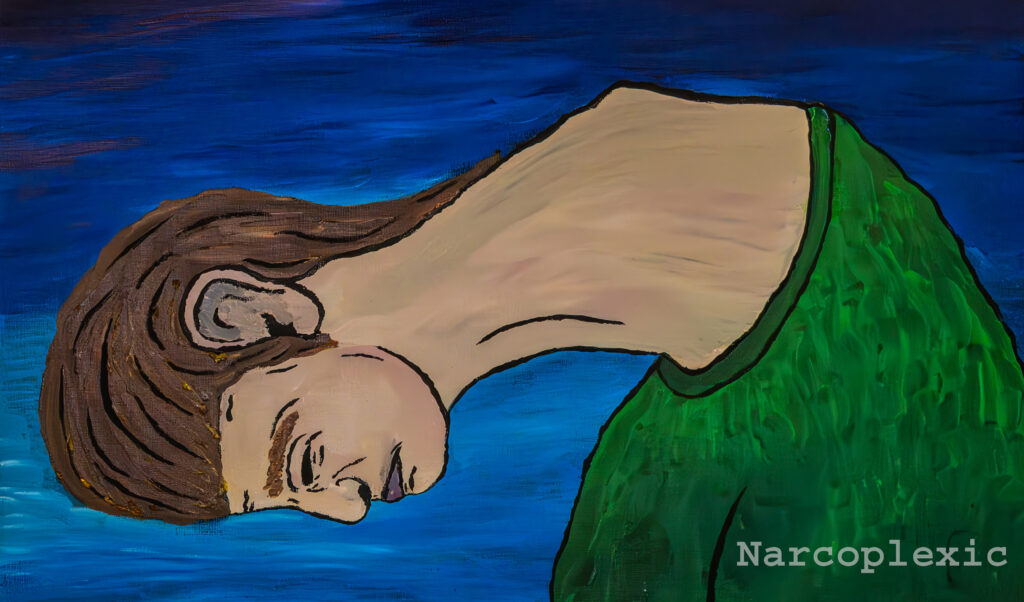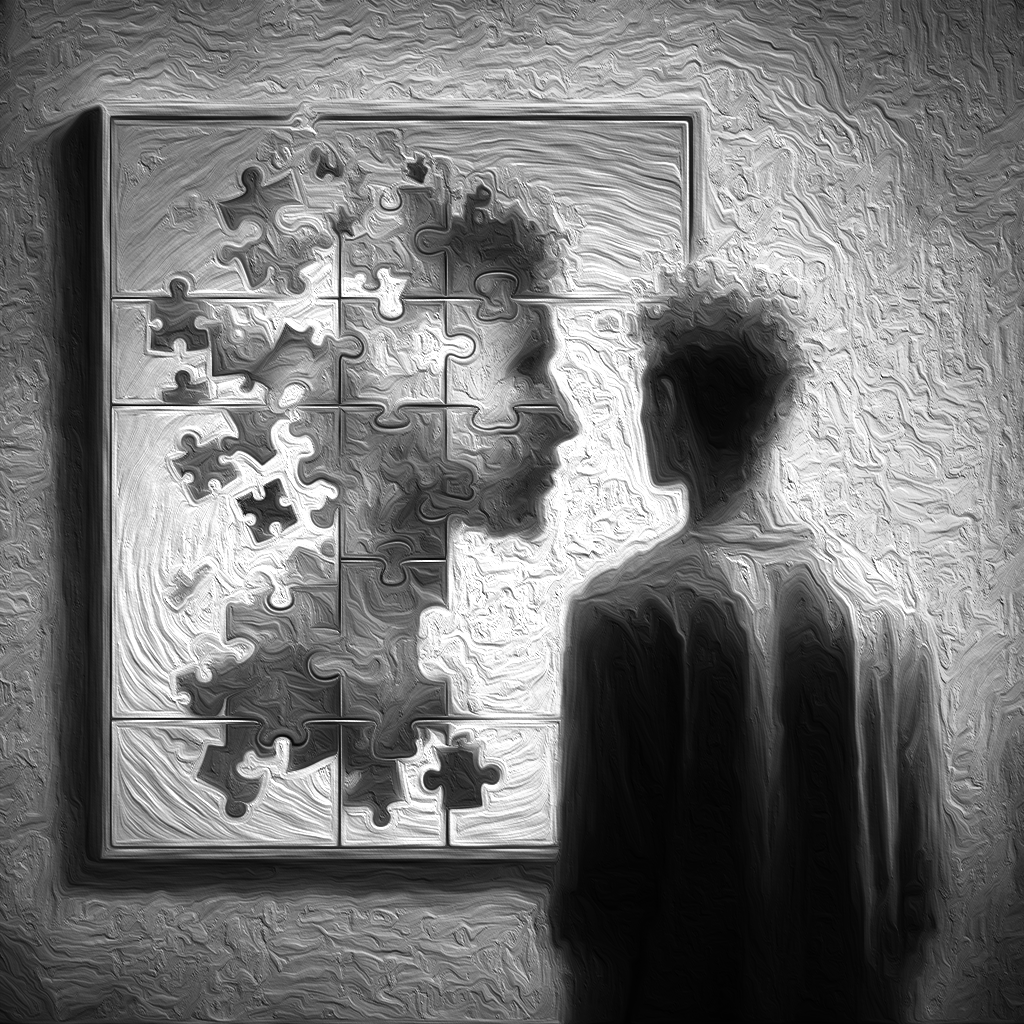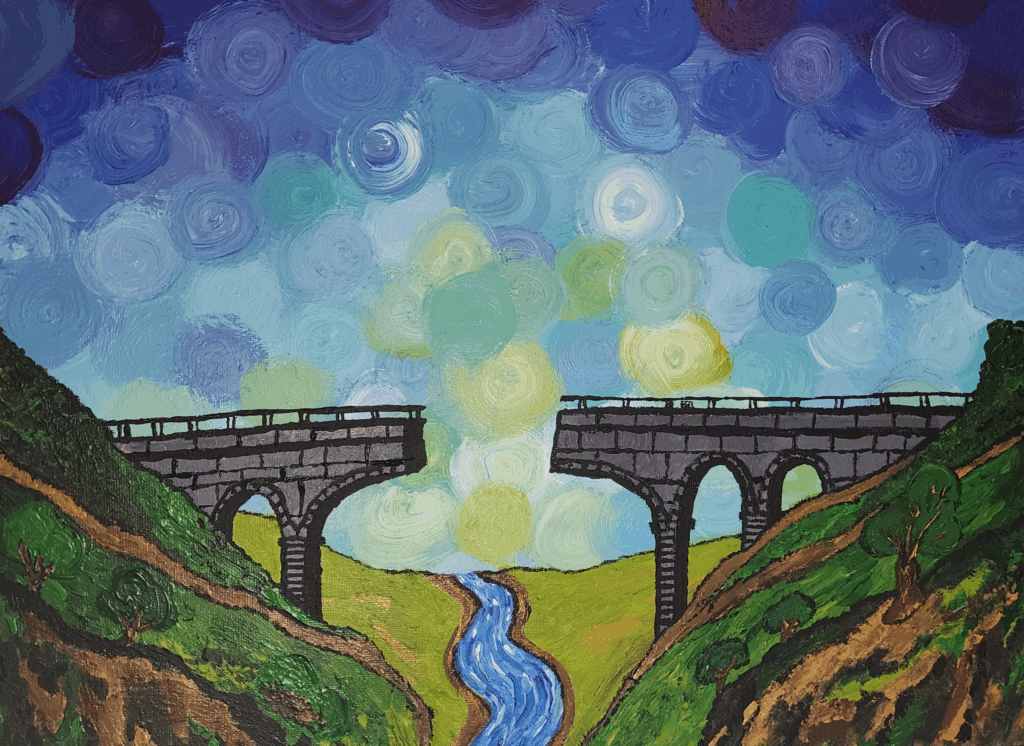For most of my life, I’ve lived with something that can’t hardly be seen, but felt – deeply, constantly. I have three rare sleep disorders: Probable Type 1 Narcolepsy with Definitive Cataplexy, Idiopathic Central Sleep Apnea, and Delayed Sleep Phase Onset Disorder.
Most people think of sleep disorders as “just being tired.” But in reality, they can be far more than that – and the invisibility makes it so brutal. Most people don’t realize, the science in recent decades has shown Type 1 Narcolepsy to be, due to what is an autoimmune attack process deep in the Hypothalamus.
When I first started experiencing Cataplexy, it was subtle – laughter would interfere with my knees, joy would trigger strange inner sensations. Over time, those episodes became more intense. By my early 20s, they escalated to what was severe/complete Cataplexy – meaning my body would go completely limp during moments of highly stimulated emotion. A funny conversation, a burst of excitement, just trying to exert myself physically like I’d always before been able to do, even just a simple unexpected smile – and I’d collapse, fully conscious but paralyzed.
Imagine joy becoming interfering with your physical body, to a potential point of being dangerous. Imagine having to strictly, in different moments most often during interactions, monitor your emotions just to stay upright. Not to mention ever remaining composed in posture, facial expression, even just in speaking clearly – smoothly.

It took 28 years before I even learned the term Cataplexy, let alone received a diagnosis some years later. Until then, I was simply adapting, tuning in however I could. That tendency – to adapt silently – started much earlier in life.
As an infant, I had intense seizures due to a rare islet growth on my pancreas, which flooded my body with insulin and caused life-threatening hypoglycemic seizures. At just four months old, I underwent an experimental surgery to remove nearly my entire pancreas. From that point on, medical uncertainty became part of my story.
So when the collapses started later in life at 20 years old, I didn’t immediately seek help. I lived through it. I adjusted my environment. I found ways to function within limitations. That’s the thing with invisible illnesses – they don’t always inspire urgency. They’re very easy to overlook, assume as normal. While being extremely difficult, if not impossible, to manage putting into words, or begin to articulate. That goes even internally for the person living it.
But the emotional, psychological, and then physical impacting tolls – became harder to ignore.
Relationships became nearly impossible. It wasn’t the fear of collapsing – it was the ongoing, invisible interference that disrupted even the most ordinary moments, especially intimate ones.

Through my twenties, I was constantly adjusting, constrained by something few could see but I felt acutely. I had learned to avoid full collapses in public, but Cataplexy still showed up in nearly every interaction – not just internally, but externally. Internally, my body would begin to unravel – muscular interference, speech halting, emotion short-circuiting my physical presence.
Outwardly, it came across as awkwardness, emotional distance, even something like a speech impediment. I was fully aware of what was happening, but unable to explain it in any way that felt remotely adequate. ‘A dissipation of my muscles during pleasant interactions’ was the closest I could get – but it wasn’t something I could easily say aloud as it would require further discussion if I went there.
I wasn’t afraid of Cataplexy; I was living with it – continually, silently, and visibly misread. It shaped how I could interact, how much of myself I could show, and whether I could show up at all. I’d tuned in and through trial and error, tried everything I possibly could to adapt.
Social isolation followed – not by choice, but by necessity. Even when I wanted connection, it felt like I had to trade away too much just to have a chance at it.

I have a longtime friend – someone who’s read my writing, who knows me well – offer a “solution.” We were walking back from an unsuccessful morels mushroom hunt in the woods when he began passionately insisting that my problem could be solved with discipline. That if I simply slept earlier, woke at sunrise, and got morning sun, I’d be cured. His words: “It’s obvious.”
He repeated it over and over, for an hour – convinced that my disorder was just poor routine.
I remember saying multiple times, “I wish it were that simple.”
I even asked him: “If someone in a wheelchair were in front of us, would you tell them they clearly have legs and just need to be more disciplined to stand up, and to walk?”
That moment stuck with me. He meant well, but the damage was real. He saw effort as the missing ingredient. He knew very well that I’ve been fighting every day just to hold a baseline.
And it wasn’t just him – this is a common matter for people with Narcolepsy, and I suspect those like myself in the rare of rare, with severe/complete Cataplexy can relate even more so.

Other friends – people I grew up skating with, people I’ve worked alongside – would dismiss what I was going through. One compared Cataplexy to how he feels when drunk. Another told me flatly: “It’s all in your head.” To which I responded: “Yeah – literally. My hypothalamus was damaged by an autoimmune attack that destroyed neurotransmitter-producing cells. So, technically, you’re not wrong.”
Even within the Narcolepsy community, many can’t fully comprehend the depth of impact Cataplexy has – not only when it becomes frequent and intense, but in the long-term psychological and physical toll it takes. For those who’ve lived with severe/complete Cataplexy over extended periods, it leaves lasting scars: not just emotional, but physiological.
And even very much among doctors – including the small number who do have expertise in Narcolepsy and familiarity with Cataplexy, some at the top of the field – there’s often a profound gap or disconnect in understanding just how deeply and persistently this symptom can affect a person’s life. Especially when it shows up with regularity and severity, the damage it causes is often invisible, yet deeply entrenched.
People who live with Cataplexy to this extent often find themselves navigating rigid limitations – not because they want to, but because their nervous system has made joy, laughter, and deep connection physically dangerous. Things most people do without thinking – smiling freely, sharing a joke, bonding over something meaningful – can lead to collapse.
It becomes a kind of self-surveillance: guarding your own happiness so your body doesn’t betray you. While having to relearn to live, over and over, adjusting and adapting endlessly, over time.

And, it’s worth just mentioning, as to not leave out – the excessive daytime sleepiness, disrupted nighttime sleep, hypnagogic/hypnopompic hallucinations, sleep paralysis, and what not (being a lot) more in addition within Narcolepsy – most people manage decently to well through what is second nature. While often taking so much of it for granted.
The underlying matter in the disease Narcolepsy, has to do with the loss of to a total lack of what is a critical neurotransmitter Orexin/Hypocretin (same thing) deep in the Hypothalamus. It is responsible for regulating not just wake and sleep states, but essentially what is the balance, re-syncing day to day + night to night, of both one’s psychological and physical body systems.
What hurts most is the disconnect – when people you care about try to relate, but end up diminishing your reality instead. When they can’t see the full picture, no matter how many times you explain it. When the things they take for granted become the very things that undo you.
Being misjudged, disregarded, prejudged, dismissed, minimized, downplayed, questioned and doubted by others’ who often have a deep curiosity mixed with a lack of willingness to, at the least, be considerate; or dare I say, be respectful.
Narcolepsy is not just being tired. Cataplexy is not just falling. These are symptoms of a condition that infiltrates every part of life – physical, emotional, social – and does so invisibly.
That’s why I speak about it. That’s why I keep telling these stories.
Not for pity – but for awareness. For those who’ve been dismissed. For those still seeking answers. And for those who never stop fighting to be understood.

————————————————————————————————————–
Disclaimer: The information provided in this article is intended for informational and educational purposes only. Seek a qualified medical professional with expertise in Narcolepsy for diagnosis or treatment. I am not a medical professional.
Created by Solomon Briggs
(aka Narcoplexic)
May 21st, 2025
The Weight of Being Misunderstood – Living with Rare Sleep Disorders © 2025 by Solomon Briggs is licensed under Creative Commons Attribution-NonCommercial 4.0 International
To view a copy of this license, visit https://creativecommons.org/licenses/by-nc/4.0/
“You may use this tool for non-commercial purposes, but must credit Solomon Briggs.”
